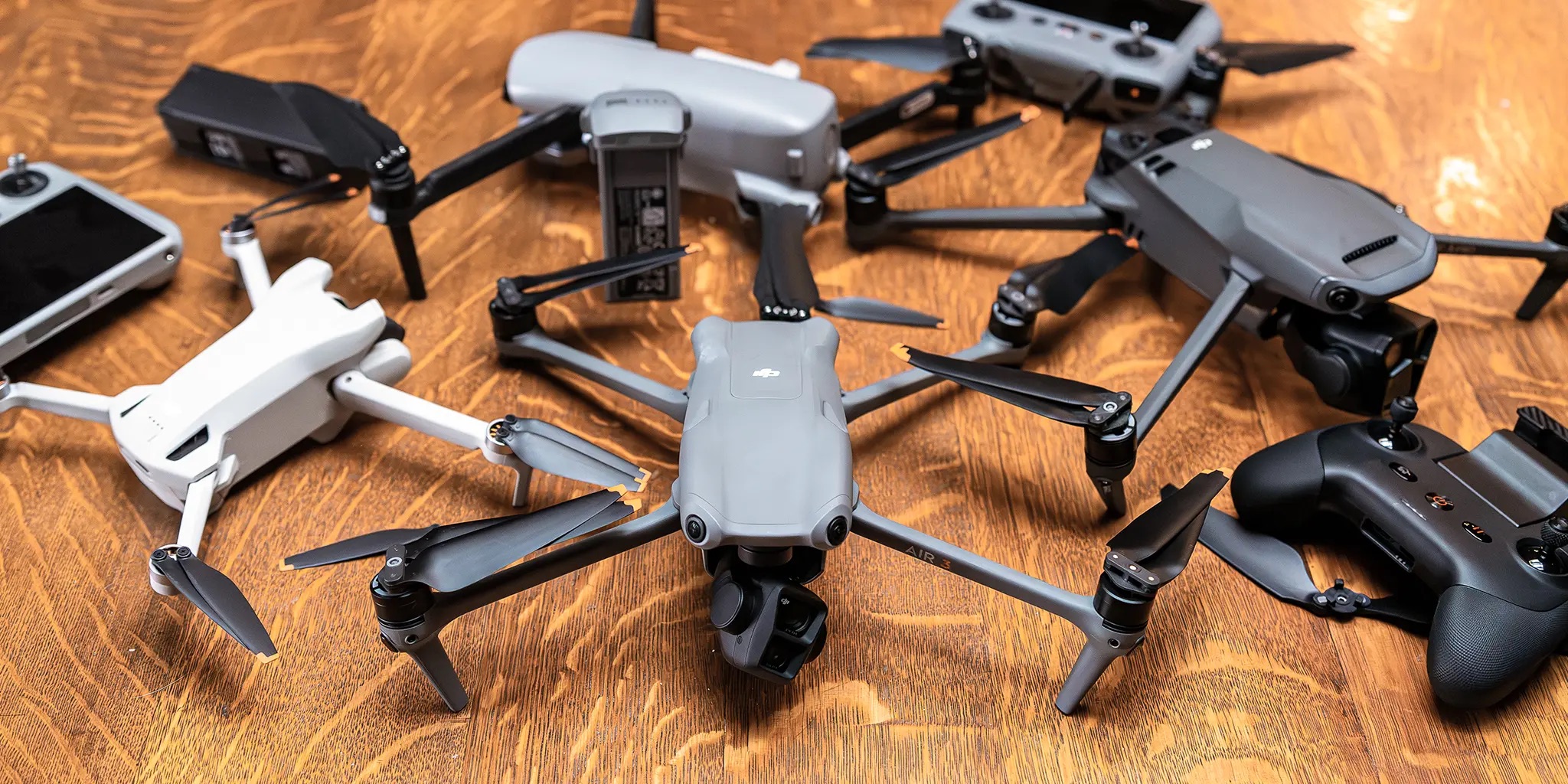
The Rise of Drones: Transforming Industries and Our Daily Lives
1. Drones in Agriculture: Aerial Farming Revolution
Agriculture is one of the oldest sectors to benefit from drone technology. Traditionally, farmers would have to inspect crops manually, which could be time-consuming and labor-intensive. However, drones equipped with high-resolution cameras and sensors now offer farmers an efficient way to monitor their crops. These drones can:
Survey large fields: By flying over vast expanses of farmland, drones can gather crucial data on crop health, moisture levels, and pest infestations.
Spray pesticides or fertilizers: Drones can even apply pesticides or fertilizers with precision, reducing waste and ensuring that resources are distributed evenly.
Monitor crop growth: Using infrared cameras, drones can analyze plant health, identifying areas that need attention before problems become too widespread.
The result? Reduced costs, increased crop yields, and sustainable farming practices.
2. Drones in Delivery: The Future of Logistics
Imagine ordering a product online and having it delivered to your doorstep in just a matter of minutes. While this may sound like a futuristic concept, drones are already playing a role in transforming the logistics and delivery industry.
Companies like Amazon have been testing drone-based delivery systems that promise to revolutionize the way we receive goods. These drones are designed to transport small packages efficiently, bypassing road traffic and ensuring faster delivery times. The benefits are clear:
Speed: Drones can deliver products faster, especially in urban areas where road traffic is an issue.
Cost-effectiveness: With drones taking over the "last-mile" delivery, logistics companies can cut down on the cost of human labor and transportation vehicles.
Environmentally friendly: Electric drones generate less pollution than traditional delivery trucks, contributing to greener logistics.
While there are still regulatory hurdles to overcome, drone delivery could become commonplace in the coming years.
3. Drones in Cinematography: A New Era in Filmmaking
Drones have brought a new level of creativity and efficiency to filmmaking. Previously, aerial shots would require expensive helicopters or cranes, which made them inaccessible for many filmmakers. Now, with the rise of drones, capturing breathtaking aerial footage has never been easier or more affordable.
Cost-effective aerial shots: Drones can fly at varying altitudes and angles, capturing stunning views without the need for specialized equipment.
Dynamic storytelling: Drones allow filmmakers to follow action in unique ways, creating dynamic scenes that were previously impossible to film.
Versatility: Whether it’s a scenic landscape, an action-packed chase, or a documentary shot in the wild, drones can deliver high-quality footage in any environment.
Drones are truly changing the way stories are told, adding depth and excitement to visual media.
4. Drones in Search and Rescue: Saving Lives from the Sky
Drones are also proving to be a lifesaving tool in search and rescue missions. When natural disasters like earthquakes, floods, or wildfires strike, drones can quickly survey affected areas and provide real-time data to rescue teams. The advantages of drones in such scenarios include:
Rapid deployment: Drones can be sent into hazardous areas without putting human lives at risk, enabling first responders to gather essential information quickly.
Access to hard-to-reach places: Drones can fly into dangerous or inaccessible locations (e.g., collapsed buildings or forest fires) to locate survivors or assess the damage.
Thermal imaging: Many search-and-rescue drones are equipped with thermal cameras, which allow them to detect heat signatures from trapped individuals, even in low visibility conditions.
In emergencies, drones are proving to be invaluable, helping save lives and improving the efficiency of rescue operations.
5. Drones in Environmental Conservation: Protecting Our Planet
Drones are also playing a vital role in environmental conservation efforts. Whether it’s monitoring endangered species, mapping deforestation, or tracking pollution levels, drones are helping conservationists better understand and protect our planet.
Wildlife monitoring: Drones can capture images and videos of wildlife in remote areas without disturbing the animals. This helps researchers track animal populations and behavior.
Forest monitoring: Drones are being used to monitor forest health, detect illegal logging activities, and assess the effects of climate change on forests.
Ocean health: Drones are even being used to monitor marine life and the health of coral reefs, providing crucial data for conservation efforts.
Drones are empowering environmentalists to take a more proactive approach to preserving the natural world.
6. Drones in Infrastructure Inspection: Safer, Faster, and More Precise
Inspecting infrastructure like bridges, power lines, and communication towers traditionally required sending workers into hazardous situations. However, with drones, these inspections can be performed safely and efficiently.
Bridge inspections: Drones equipped with high-definition cameras and sensors can fly around bridges, checking for structural weaknesses or signs of damage without the need for scaffolding or climbing.
Power line monitoring: Drones can fly along power lines, identifying potential issues like broken cables or overgrown vegetation that could disrupt service.
Data accuracy: Drones can gather precise data, making it easier to monitor the condition of infrastructure and plan for maintenance.
This not only enhances safety but also reduces the time and costs associated with traditional inspection methods.
7. The Future of Drones: What's Next?
While drones are already making waves across various sectors, the future of this technology looks even more promising. From enhanced AI capabilities to better battery life and regulatory advancements, drones are poised to become even more powerful and widespread. Some potential developments include:
AI-powered drones: Drones may become more autonomous, capable of making decisions based on real-time data, which could further reduce human intervention.
Swarming technology: A group of drones working together could perform complex tasks, such as planting crops, monitoring large areas, or delivering packages.
Longer flight times: With advancements in battery technology, drones may be able to fly for extended periods, increasing their range and capabilities.
As technology evolves, drones will continue to unlock new possibilities and redefine how industries operate.
Conclusion
Drones are no longer just a novelty—they have become essential tools that are transforming industries worldwide. From improving agricultural practices to enabling faster deliveries, aiding in search and rescue, and conserving the environment, drones are truly changing the way we live and work. As technology continues to evolve, we can only imagine how drones will further revolutionize our world, offering new opportunities for innovation and progress.
